Table of Contents Show
You’ve started a list of national parks you want to visit this year. Maybe you’ve added the Grand Canyon or Yellowstone National Park.
But have you considered visiting some national monuments on your travels? If not, you’re missing out. Let’s take a look at ten national monuments everyone needs to see at least once.
What Is a National Monument?
The National Park Conservation Association defines a national monument as “nationally significant lands and waters set aside for permanent protection.” U.S. presidents have established these areas, not Congress who designated national parks.
Therefore, as you learn about national monuments, you’ll usually read about a specific president that protected the area.
National monuments usually have historical, scientific, or cultural significance. They protect the natural history of the United States and human history.
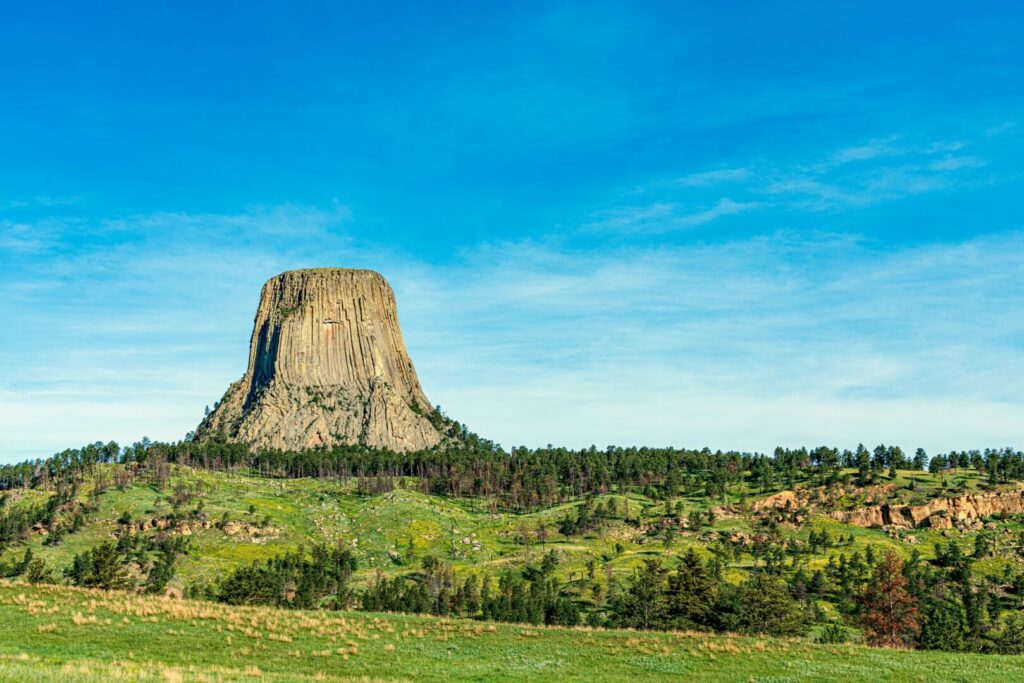
How Many National Monuments Are There?
The U.S. has 129 national monuments across the country managed by different agencies. You’ll find some areas controlled by the National Park Service, the Bureau of Land Management, and the U.S. Forest Service, among others.
10 National Monuments Everyone Needs to Visit at Least Once
Check out the list below of national monuments you shouldn’t ignore. Learn, explore, and discover new ecosystems, ancient people, and the history of our nation. It’s not just the national parks that offer spectacular views and educational opportunities.
1. Canyon de Chelly National Monument
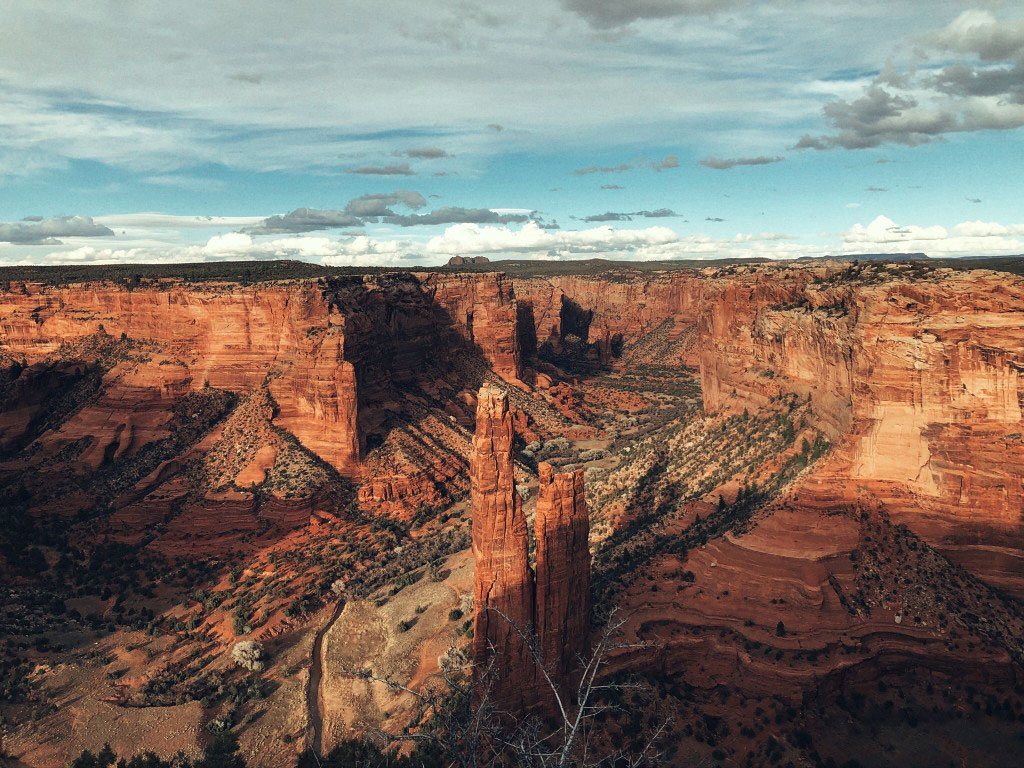
Located in Chinle, Arizona, Canyon de Chelly National Monument celebrates the ancient peoples of the Hopi and Navajo tribes. In 1931, President Hoover designated the area a national monument to preserve the archeological history of these people. Today, the National Park Service and the Navajo Nation work together to manage the land.
The North and South Rim Drives offer nine overlooks of scenic beauty. From the visitors center, you can drive north up to Massacre Cave or south down to Spider Rock Overlook. Throughout the national monument, you’ll see the desert colors of red and orange against the giant cliffs and canyon rims.
Where to Stay Near Canyon de Chelly National Monument
Cottonwood Campground in Chinle
The Navajo Parks and Recreation Department (NPRD) runs the 90 campsites and two group tent sites within the Cottonwood Campground.
RVs must be less than 40 ft in length, including the tow vehicle. The restrooms do not have showers, and none of the sites offer hook-ups. You can make reservations by calling the NPRD.
2. Craters of the Moon National Monument
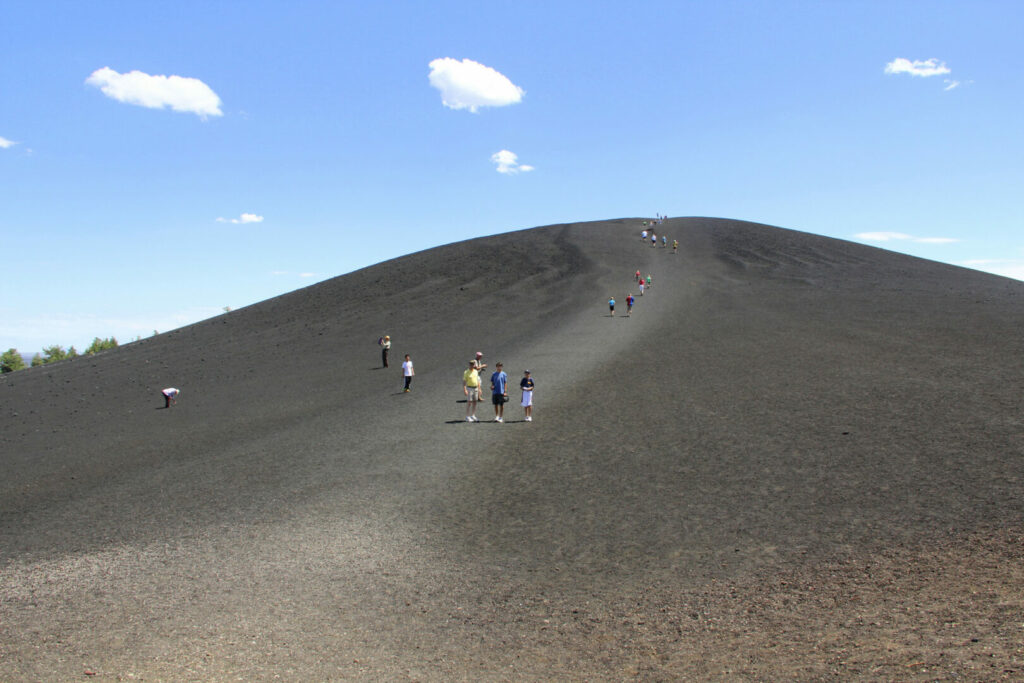
In 1924, President Coolidge declared this land in southern Idaho a national monument. Described as “weird and scenic,” the landscape here is unlike anywhere else. Visitors can explore the hikes, caves, and scenic overlooks while learning more about the Snake River Plain.
The area encompasses three major lava fields, including the deepest known rift crack in the world at 800 ft. Visit lava tubes and other volcanic features. In 2017, Craters of the Moon was also designated as an International Dark Sky Park.
Where to Stay Near Craters of the Moon National Monument
Lava Flow Campground
Located near the visitors center, Lava Flow Campground offers 42 first-come, first-served campsites. It doesn’t have a dump station or hook-ups. You can snow camp during the winter, but you must hike to the campground as the road closes from late November to April or May.
Some sites can accommodate RVs, even pull-through ones up to 100 ft long. It only has a few, though. They recommend trailers and RVs to stay within sites one through 15. Camping fees vary seasonally.
3. Devil’s Tower National Monument
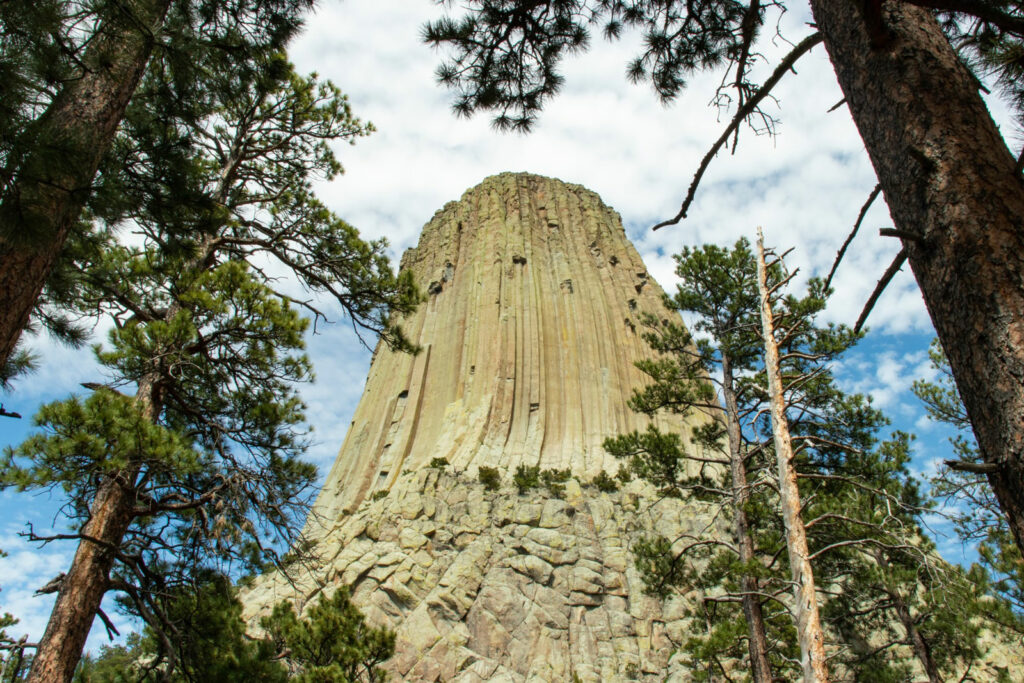
Considered sacred by the native people of the Black Hills, Devil’s Tower National Monument is a sight to behold. You’ll find Devil’s Tower located in the northeast part of Wyoming outside the Black Hills National Forest.
You can learn more about the history of the American Indians, their ceremonies, and their oral stories of Devil’s Tower when you visit. Take in the beauty by exploring one of the many hikes in the area or going rock climbing on one of America’s most famous geological structures.
Where to Stay Near Devil’s Tower National Monument
Belle Fourche Campground
The campground operates seasonally from mid-May to mid-October. Belle Fourche offers 46 sites and three group tent sites, and some can accommodate RVs up to 35 ft long. You can’t make reservations at this first-come-first-served campground. Like many campgrounds in the national park system, Belle Fourche offers no hook-ups.
4. Effigy Mounds National Monument
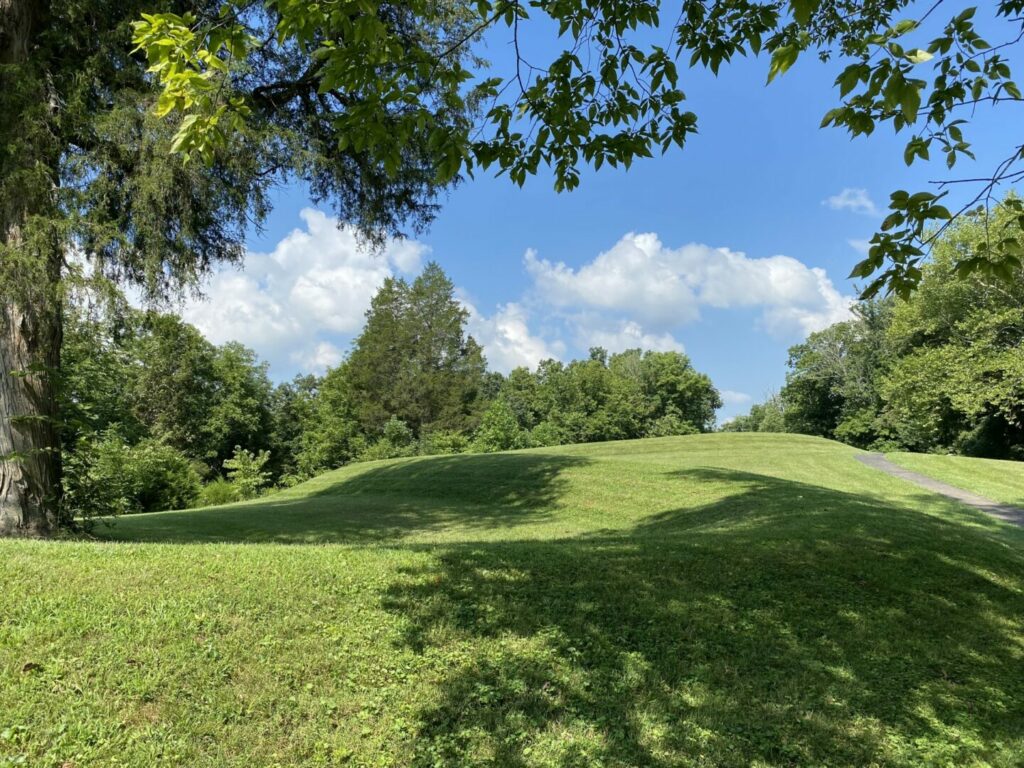
Another sacred place is Effigy Mounds in Harpers Ferry, Iowa. Here you’ll see more than 200 mounds built by the Native Americans in the Upper Mississippi River Valley. You can learn more about the ceremonies, burial practices, legends, and stories of these ancient people when you visit Effigy Mounds National Monument.
Today, twenty Native American tribes are associated with this area. The visitors’ center hours vary by season, but the hiking trails remain open year-round. There is a donation box but no fee is required to enter the national monument.
Where to Stay Near Effigy Mounds National Monument
Pikes Peak State Park
This beautiful area of Iowa is an excellent location for camping. It has back-in and pull-through sites for RVs and tent sites for more primitive campers. Some sites offer electricity.
Here you can view the Mississippi and Wisconsin Rivers and 63 mounds within the state park. It also has numerous trails for hiking and mountain biking.
5. Montezuma Castle National Monument

President Teddy Rosevelt dedicated Montezuma Castle National Monument in 1906. The Sinagua people built the dwellings you can see here around 1100 A.D. These cliff dwellings face south, meaning they enjoyed warmer temperatures in the winter and cooler temperatures in the summer. Montezuma Castle functioned as an apartment building today with twenty rooms that originally belonged to multiple families.
You can also visit the Montezuma Well, located about 15 to 20 minutes north of the national monument. The well, another site considered sacred by many American Indian tribes, offers tranquility for visitors.
Where to Stay Near Montezuma Castle National Monument
Distant Drums RV Resort
Located in Camp Verde, Arizona, Distant Drums RV Resort lies 20 minutes south of Sedona and less than 10 minutes from Montezuma Castle National Monument.
Here you’ll have access to concrete pads, full hook-ups, an exercise room, a laundry facility, an event center, a heated pool and jacuzzi, and a library. The resort offers discounts for Good Sam members, veterans, and first responders.
6. Organ Pipe Cactus National Monument
This National Monument is a testament to the beauty and uniqueness of plants and animals in the Sonoran Desert. The harsh living conditions of this area would seem to root out all living things. But here at Organ Pipe Cactus National Monument, you’ll see 31 different species of cacti and numerous creatures that have adapted to life with little water, intense sunlight, and extreme temperatures.
In 1976, the United Nations designated this area as an International Biosphere Reserve. When you visit, you might see bats, mountain lions, desert bighorns, kangaroo rats, coyotes, mule deer, and more. And you’ll notice the land isn’t red or brown like a desert but filled with greens. The plants here have learned how to thrive in the scorching heat.
Where to Stay Near Organ Pipe Cactus National Monument
Twin Peaks Campground
Twin Peaks Campground is located a little over one mile from the visitors center. It has 208 sites, four of which can accommodate RVs over 45 ft long. It has no hook-ups.
You have to get a reservation from January through March, but sites are first-come-first-served after peak season. You can use Recreation.gov to make reservations.
7. Tuzigoot National Monument
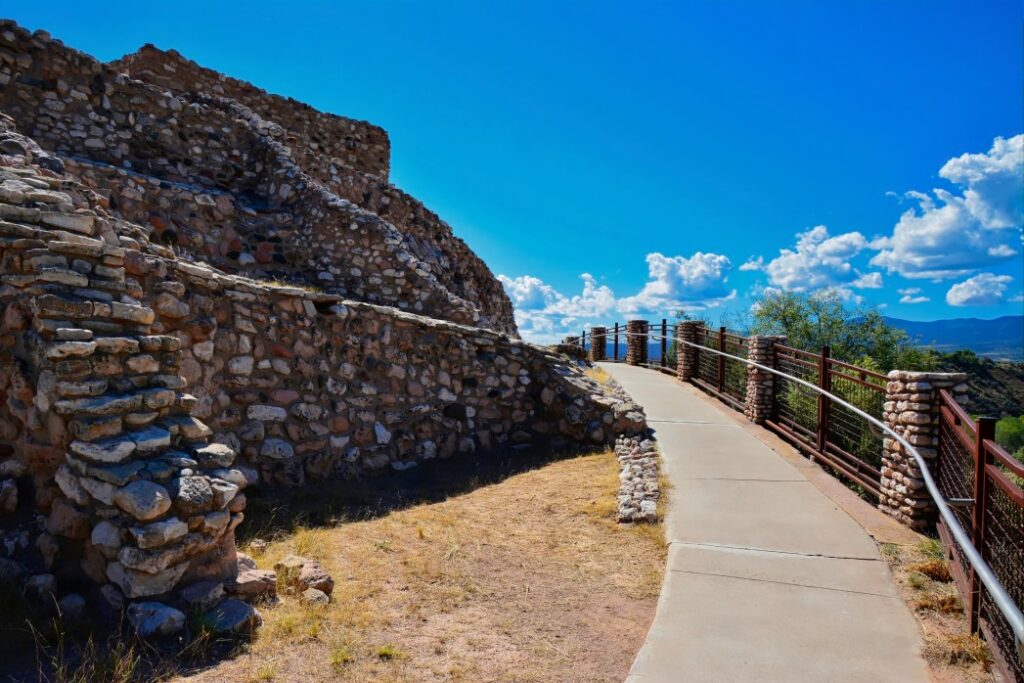
The Tuzigoot National Monument, located outside Camp Verde, Arizona, lies around 35 to 40 minutes from Montezuma Castle National Monument. When you visit, take the loop trail that goes around the Tuzigoot pueblo.
This ancient village, built over a thousand years ago, features 110 rooms. It was abandoned in the 1300s and then rediscovered in the 1930s. In 1939, Franklin D. Roosevelt proclaimed the area a national monument. You can also take the loop trail to an overlook of the Verde River and Tavasci Marsh.
Take some time to visit the museum during your visit too. Here you’ll learn more about the history of the ancient people and their way of life. The Tuzigoot Museum has over 3,000 objects on display.
Where to Stay Near Tuzigoot National Monument
Dead Horse Ranch State Park
Only 15 minutes from Tuzigoot National Monument is Dead Horse Ranch State Park in Cottonwood, Arizona. You can make campsite reservations online for one of their 100 large sites. RVs up to 40 ft and truck and trailer rigs up to 65 ft will have space to hook up here.
All sites include potable water and electricity. You can use on-site restrooms and shower facilities. You also have the option for tent camping and cabin rentals at Dead Horse Ranch State Park.
8. Muir Woods National Monument
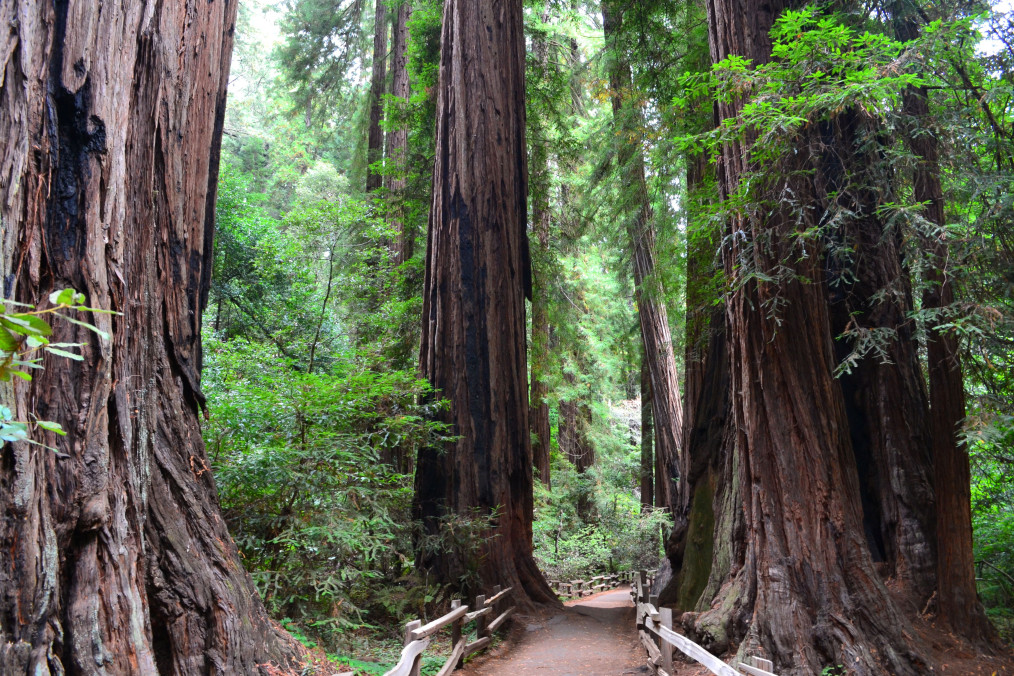
Open year-round, the Muir Woods National Monument lies in the middle of the redwoods along the northern California and southern Oregon border. Here you’ll witness the beauty of the diverse flora and fauna of the area. Although the redwoods dominate the scene, look at the plants and animals closer to the forest floor.
According to the National Park Service, “Muir Woods is the only old-growth coastal redwood forest in the Bay Area and one of the last on the planet.” Four characteristics that define old-growth forests include large live trees, multi-layered structures (commonly three layers), dead trees, and interdependent communities.
Note that you won’t get any Wi-Fi or cell service at Muir Woods National Monument, and pets are not permitted. The area can get very crowded, so it’s best to arrive early. It has 6 miles of walking-only trails that include views of the great redwoods. No biking or horseback riding is allowed.
Where to Stay Near Muir Woods National Monument
Marin RV Park
Marin RV Park, the closest RV park to San Francisco, is only 10 miles from the Golden Gate Bridge and 10 miles from Muir Woods National Monument.
With amenities like a swimming pool, laundry facility, and free cable, you’ll enjoy your stay at Marin RV Park. All 87 spaces offer full hook-ups on gravel pads. Rates cost more than area state parks, but they offer Good Sam, military, and AAA discounts.
9. Grand Staircase-Escalante National Monument

It’s hard to imagine nearly one million acres of plateaus, cliffs, slot canyons, and arches. But that’s what you’ll find at Grand Staircase-Escalante National Monument in Utah. This rugged landscape was one of the last mapped areas of the United States.
Visitors enjoy backcountry solitude here, with very few trailheads beginning near paved roads. Because of this terrain, hikers are encouraged to drive four-wheel-drive vehicles to trailheads. Scenic Byway 12 offers spectacular views of this unique landscape if you want an easy drive.
Where to Stay Near Grand Staircase-Escalante National Monument
Hole in the Rock
The Bureau of Land Management in Utah manages this boondocking area. It’s just a place for dispersed camping. It has no hook-ups, no reservations, and easy access with decent cell service. GPS coordinates are 37.723, -111.527.
10. Giant Sequoia National Monument

President Clinton designated the over 320,000 acres of giant sequoias in California as a National Monument in 2000. The world’s largest tree grows only along the Sierra Nevada mountains.
Although the redwoods are the tallest trees, the giant sequoias have a wider girth and can reach 30 ft in diameter. Besides these beautiful trees, visitors will find rivers, peaks, and village sites among this vast ecosystem.
When you visit Giant Sequoia National Monument, plan on hiking, fishing, rock climbing, caving, birding, mountain biking, and more. The activities don’t end there. Make sure to stop by the Boole Tree, the largest tree by volume in the national monument at 269 ft tall and 35 ft in diameter.
Where to Stay Near Giant Sequoia National Monument
Tule Recreation Area Campground
The Army Corps of Engineers owns the Tule Recreation Area along the shores of Success Lake. The campground has 103 sites, but only 29 of them have electric hook-ups. However, it does have showers and dump stations on-site. There’s a marina for boat and kayak rentals, fishing ponds, and playgrounds.
National Monuments Are Underrated Destinations That Are Totally Worth It
Many travelers seek out the National Parks when they set out on a road trip, ignoring many of these national monuments. Don’t miss out on visiting these beautiful and historic areas of America.
You’ll view vastly different landscapes, learn the history of ancient Indian tribes, and experience pristine and unique beauty. So which national monument is first on your list?







Hovenweep National Monument in Colorado/Utah. The campground is right on the canyon rim where many of the Anasazi cliff dwellings are located. Incredible wilderness experience as well.
Do any National Parks not on the western half of the country rank? Any tips for the East Coast?
Hello!
There are many amazing national parks and other units of the National Park Service in the East. This article focused on the National Monuments. Almost all of them are out west because they were (in many cases) created to save important scientific / historic areas from being looted and destroyed by people moving into and settling in the western part of the country in the late 1800s and early 1900s. Without going back and counting I think 7 of the 10 NMs here fall into that category.
In Yosemite natl Park visit the giant sequoia trees. We took the propane tour busses there and spent an afternoon of astonished discovery looking at some of the largest and oldest things on the planet.. at the time the grandaddy tree was named Old Grizzly. A monster in diameter and height. I walked up to a tree branch broken off & on the ground from half way up from an earlier storm that was laying sideways on the ground. I stood next to this limb which was close to twice as tall as me and I’m 6 foot. Imagine a tree branch laying on the ground 12 feet tall in thickness and it wasn’t the larger of the trees branches. I couldn’t have climbed over it if I tried. I couldn’t even see the top of this monster tree and probably would take 25 people holding hands arms stretched to incircle its trunk. To visualize this was spectacular not to mention they said it was about 2600 years old. I thought to myself, yes there has to be an omnipotent God.
Can’t believe you didn’t feature the Colorado National Monument!
State Parks that are just as good as national:
Dead Horse Point Utah near Moab
Calaveras Big Trees State Park CA for giant Sequoia, Redwood, Sugar Pine & Ponderosa Pines
Cahokia Mounds state park just East if St. Louis